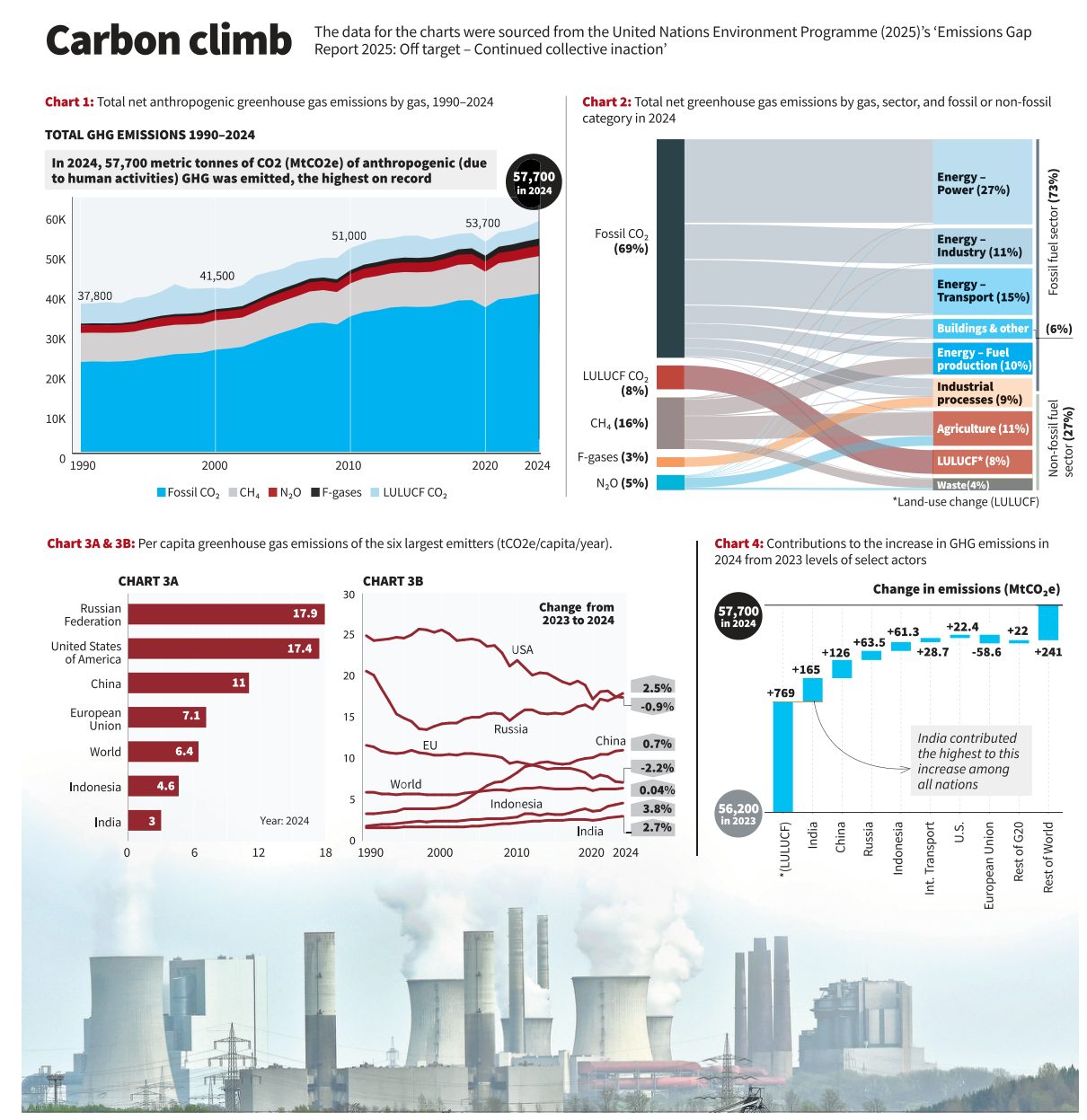Why in the News?
The United Nations Environment Programme’s (UNEP) 2024 Emission Gap Report (“Off Target”) released before COP30, says India saw the world’s largest rise in greenhouse gas emissions in 2024, adding 165 MtCO₂e.

About the Emission Gap Report:
- Overview: It is an annual flagship publication by UNEP that measures the gap between current national emission pledges (NDCs) and the cuts required to meet the Paris Agreement goals of limiting global warming to 1.5°C or 2°C.
- Purpose: Evaluates global progress, national commitments, and policy effectiveness, recommending actions to close the “emissions gap.”
- Scope: Assesses emissions from energy, land use, and industry, comparing policy trajectories with required emission reduction pathways.
Key highlights of the 2024 Edition- “Off Target”:
- Core Message: Warns that the world remains far off track to achieve the 1.5°C limit.
- Global Emissions: Hit a record 57.7 gigatonnes CO₂ equivalent (GtCO₂e) in 2024, a 2.3% rise from 2023.
- Warming Projections:
- Current policies → ~2.8°C by 2100.
- Full NDC implementation → only 2.3–2.5°C limit.
- G20 Role: Account for 77% of global emissions, led by China, USA, India, EU, Russia, and Indonesia.
- NDC Submission: Only 64 countries (63% of global emissions) updated their NDCs by 2024; most G20 nations off-track for 2030–2035 goals.
- Sectoral Breakdown:
- Fossil fuels – 69% of total emissions.
- Methane – 16%.
- Land-use change – significant share of increase.
- Temperature Outlook: Predicts a temporary overshoot of 1.5°C by the early 2030s without rapid global action.
India-Specific Findings:
- Emission Growth: India saw the largest absolute rise in 2024, +165 MtCO₂e, the world’s highest single-country increase.
- Growth Rate: 3.6%, second only to Indonesia (4.6%).
- Per Capita Emissions: 3 tCO₂e, less than half the global average (6.4 tCO₂e).
- Global Ranking: 3rd-largest emitter, after China and the USA.
- NDC Commitments: Aims to reduce emission intensity by 45% (2005–2030) and achieve 50% non-fossil energy capacity by 2030.
- Progress: Overachieved by 15% on emission intensity but has not submitted an updated 2025 NDC.
- COP30 Outlook: India’s rapid emission rise and missed NDC update may invite scrutiny, though low per capita emissions and developmental equity support its climate position.
| [UPSC 2024] Consider the following statements: I. Carbon dioxide (CO₂) emissions in India are less than 0.5 t CO2/capita. II. In terms of CO2 emissions from fuel combustion, India ranks second in Asia-Pacific region. III. Electricity and heat producers are the largest sources of CO2 emissions in India. Which of the statements given above is/are correct? (a) I and III only (b) II only (c) II and III only * (d) I, II and III |
Get an IAS/IPS ranker as your 1: 1 personal mentor for UPSC 2024

